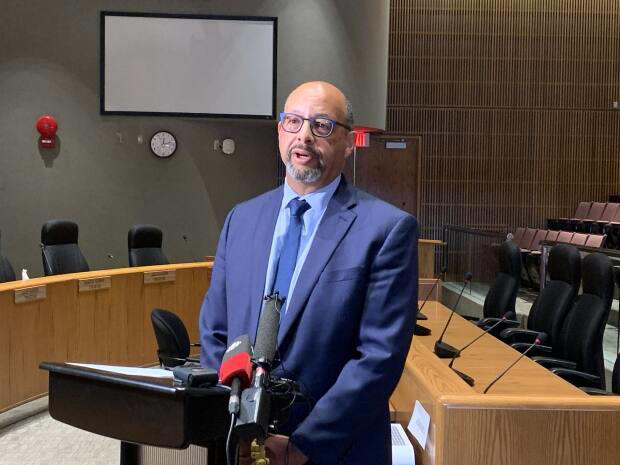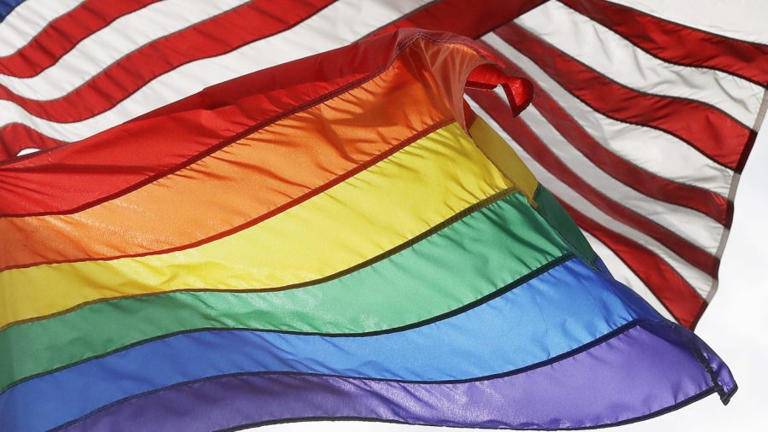RNA recoding is widespread in some animals, though not humans; UC San Diego researchers report squid employ it to dynamically alter key proteins to work better in colder water
Peer-Reviewed PublicationIMAGE: DORYTEUTHIS OPALESCENS, OTHERWISE KNOWN AS MARKET SQUID, HELPED UC SAN DIEGO RESEARCHERS DISCOVER THE ANIMALS’ ABILITY TO RECODE RNA IN CELLS TO IMPROVE THEIR FUNCTIONING IN DIFFERENT WATER TEMPERATURES. view more
CREDIT: UC SAN DIEGO, SEA GRANT CALIFORNIA
Cephalopods are a large family of marine animals that includes octopuses, cuttlefish and squid. They live in every ocean, from warm, shallow tropical waters to near-freezing, abyssal depths. More remarkably, report two scientists at University of California San Diego in a new study, at least some cephalopods possess the ability to recode protein motors within cells to adapt “on the fly” to different water temperatures.
Writing in the June 8, 2023 edition of Cell, first author Kavita J. Rangan, PhD, a postdoctoral researcher in the lab of senior author Samara L. Reck-Peterson, PhD, a professor in the departments of Cellular and Molecular Medicine at UC San Diego School of Medicine and Cell and Developmental Biology at UC San Diego and an Investigator of the Howard Hughes Medical Institute, describe how opalescent inshore squid (Doryteuthis opalescens) employ RNA recoding to change amino acids at the protein level, improving the function of molecular motors that carry out diverse functions within cells in colder waters.
RNA recoding allows organisms to edit genetic information from the genomic blueprint to create new proteins. The process is rare in humans but is common in soft-bodied cephalopods, such as D. opalescens, which makes seasonal spawning migrations along the coast of San Diego.
“Cephalopods like D. opalescens are remarkable for their large nervous systems, body innovations and complex behaviors” said Rangan, “and their extensive use of RNA recoding has raised many questions about how this process might be involved in responding to environmental cues like temperature.”
In the new study, Rangan and Reck-Peterson looked at changes to a pair of proteins in squid cells that serve as molecular motors transporting a variety of intracellular cargoes along cellular highways called microtubules. Specifically, the researchers focused on molecular motor proteins called kinesin and dynein, both of which are fundamental to transportation within all cells, including neurons. In humans, mutations in both motors are linked to neurodegenerative diseases.
Working with live squid hatchlings at Scripps Institution of Oceanography, Rangan found that recoding of kinesin increased in animals as they experienced colder ocean water temperatures. Rangan then recreated recoded kinesin proteins using recombinant DNA technology and biochemistry. She then measured the movement of single motor molecules using advanced light microscopy and found that the recoded kinesin motors functioned better at cold temperatures.
“The work suggests that squid can tune their proteome (an organism’s entire complement of proteins) on the fly in response to changes in ocean temperature,” said Reck-Peterson. “One can speculate that this allows these marine ectotherms — animals that depend on external sources of body heat — to survive and thrive in a broad range of ocean temperatures.”
The scientists also found that RNA recoding varied across tissues, generating new kinesin variants with distinct movement properties.
“This work supports the idea that recoding in cephalopods is important for dynamically tuning protein function to support physiological needs and acclimate to changing environmental conditions” said Reck-Peterson. “These animals are taking a completely unique approach to adapting to their surroundings.”
Rangan said the findings also suggest the squid “editome” may be a valuable resource for highlighting regions of molecules that are amenable to plasticity or change. She is currently developing a database that includes the entire squid editome across different ocean temperatures.
“In highly conserved proteins, like kinesin and dynein, cephalopod recoding sites can point to overlooked residues of functional significance, said Rangan, “and this has broader implications for understanding basic protein function as well as for engineering proteins with specific functions. Cephalopods may be able to show us where to look and what changes to make.”
JOURNAL
Cell
DOI
Masters of acclimation: Octopuses adjust to cold by editing their RNA
Octopuses use RNA editing to rapidly respond to environmental temperature changes by altering protein function
Peer-Reviewed PublicationIMAGE: OCTOPUS BIMACULOIDES. view more
CREDIT: ROGER T. HANLON
WOODS HOLE, Mass. -- Each cell comes with a finite set of instructions encoded in its DNA. Life, however, is unpredictable, and when circumstances change, animals need flexibility to acclimate. New research led by Joshua Rosenthal of the Marine Biological Laboratory (MBL) and Eli Eisenberg at Tel Aviv University indicates that octopuses and their close relatives elegantly adjust to environmental challenges by tinkering with their RNA — an intermediary molecule that conveys DNA’s directions.
In a new study appearing in Cell on June 8, Rosenthal and colleagues document an enormous uptick in RNA editing when octopus, squid and cuttlefish, known as coleoid cephalopods, acclimate to cold water. After cooling the octopuses’ tanks, the team saw increases in protein-altering activity at more than 13,000 RNA sites in the animals’ nervous systems. In two of these cases, they investigated how swapping out a single letter of the RNA molecule’s code alters the function of proteins the neurons produce.
Through RNA editing, the cephalopods appear to have found a unique way of tweaking their own physiology, according to Rosenthal, a senior scientist at MBL.
“We’re used to thinking all living things are preprogrammed from birth with a certain set of instructions,” he says. “The idea the environment can influence that genetic information, as we’ve shown in cephalopods, is a new concept.”
The mystery of massive RNA editing in cephalopods
A cell’s molecular machinery transcribes the instructions encoded in DNA into RNA, some of which goes on to make protein. Researchers have learned that cells have the capacity to swap one member of the four-letter genetic code, Adenosine, for a substitute molecule, Inosine, which behaves like Guanosine, one of the original four. While the same process occurs in humans and most other animals, it only rarely affects RNA that’s bound to produce protein.
In 2015, Rosenthal and his colleagues showed that squid employ this kind of protein-altering RNA editing (called A-to-I) on a massive scale, and later showed the same in octopus.
“A big question for us was, ‘What are they using it for?’” Rosenthal says.
Because editing changes RNA only temporarily, the researchers suspected these animals use it to acclimate to their environment. For the current study, they focused on the effects of one such factor, temperature, within the nervous system. Temperature matters because it governs the activity of enzymes, which in turn drive chemical reactions crucial to all physiological processes.
Like other cephalopods, the California two-spot octopus (Octopus bimaculoides) they studied cannot generate its own body heat to counteract the temperature drops that accompany tides, changes in water depth, and seasons.
After acclimating octopuses to temperatures at the warm end of their natural range (22 degrees C/ 72 degrees F) and the cool end (about 13 degrees C / 55 degrees F), the researchers examined their RNA. Within its molecular code, they tracked activity at locations where they already knew editing occurs. In the octopuses in the cold tanks, they found significant increases at 13,285 sites where the one-letter change alters protein. For those in the warm tanks, they found upticks at 550 such places.
Follow-up experiments suggested RNA editing may help the animals adapt to gradual changes, but not to rapid ones associated with, for example, traveling from warmer surface water down to cooler depths.
To corroborate the lab work, Matthew Birk, now an assistant professor at Saint Francis University in Pennsylvania, recorded temperature near octopus dens in winter and late summer, then collected the animals.
With help from collaborators at the University of Michigan and Texas Tech University, the team investigated how RNA editing tweaked the function of two proteins that are vital for neural function in the octopuses. The first protein, kinesin-1, ferries cargo along the long branches of neurons. RNA editing, they found, changes the rate at which this molecule travels. Likewise, it alters the responsiveness of a protein called synaptotagmin that enables communication between neurons.
One secret to cephalopods’ sophistication?
Cephalopods likely use this form of genetic tinkering to adjust to change in many ways, well beyond acclimating to cold water, Rosenthal suspects. “I think it’s the tip of the iceberg,” he says of this study’s findings.
It may explain, in part, how these organisms have achieved sophisticated behavior. Octopuses, for example, can solve mechanical puzzles, and mimic colors and textures to camouflage themselves. Capabilities like these require nervous systems composed of a complex set of proteins.
“What mechanisms do they use to create this complexity? I believe that RNA editing is one of them,” Rosenthal says.
CAPTION
Octopus bimaculoides.
CREDIT
Tom Kleindinst/Marine Biological Laboratory
Written by Wynne Parry
—###—
The Marine Biological Laboratory (MBL) is dedicated to scientific discovery – exploring fundamental biology, understanding marine biodiversity and the environment, and informing the human condition through research and education. Founded in Woods Hole, Massachusetts in 1888, the MBL is a private, nonprofit institution and an affiliate of the University of Chicago.
JOURNAL
Cell
METHOD OF RESEARCH
Experimental study
SUBJECT OF RESEARCH
Animals
ARTICLE TITLE
Temperature-dependent RNA editing in octopus extensively recodes the neural proteome
ARTICLE PUBLICATION DATE
8-Jun-2023
Octopuses rewire their brains to adapt to seasonal temperature shifts
IMAGE: THIS IS A PHOTO OF A CALIFORNIA TWO SPOT OCTOPUS (OCTOPUS BIMACULOIDES). view more
CREDIT: TOM KLEINDINST
Octopuses don’t thermoregulate, so their powerful brains are exposed to—and potentially threatened by—changes in temperature. Researchers report June 8 in the journal Cell that two-spot octopuses adapt to seasonal temperature shifts by producing different neural proteins under warm versus cool conditions. The octopuses achieve this by editing their RNA, the messenger molecule between DNA and proteins. This rewiring likely protects their brains, and the researchers suspect that this unusual strategy is used widely amongst octopuses and squid.
“We generally think that our genetic information is fixed, but the environment can influence how you encode proteins, and in cephalopods this happens on a massive scale,” says senior author Joshua Rosenthal (@joshrosenthal16) of the Marine Biological Laboratory of Woods Hole, Massachusetts.
Compared to DNA mutations, which allow organisms to adapt over the course of generations, RNA editing offers a temporary and flexible way for individuals to adapt to environmental changes. RNA editing occurs across the tree of life, but RNA recoding—when the editing changes the subsequent protein structure—is much rarer, except in soft-bodied cephalopods like octopuses and squid. Humans have millions of editing sites but editing affects the protein products in only ~3% of their genes, whereas coleoid or “smart” cephalopods recode the majority of their neural proteins.
“RNA recoding gives organisms the option to express a diverse quiver of proteins when and where they choose,” says Rosenthal. “In cephalopods, most of the recoding is for proteins that are really important for nervous system function, so the natural question is, are they using this to acclimate to changes in their physical environment?”
To address this question, the research team explored whether octopuses undergo RNA editing in response to shifts in temperature and whether this editing impacts the function of their brain proteins. In the wild, octopuses are exposed to changes in temperature that can occur both rapidly, for example, when they dive to colder depths or there is upwelling, and slowly, when the seasons change.
The team focused on California two-spot octopuses (Octopus bimaculoides)—small, yellowish-brown octopuses who sport two iridescent blue false eyes under their real eyes. These octopuses live off the coast of California and Mexico, and their genome has already been sequenced.
To investigate whether RNA editing is associated with temperature variation, the researchers acclimated wild-caught adult octopuses to warm (22ºC) or cold (13ºC) waters in tanks at the Marine Biological Laboratory. After several weeks, they compared the RNA transcripts for the cold- and warm-acclimated octopuses to the genome to look for signs of RNA editing at over 60,000 previously identified editing sites.
“Temperature-sensitive editing occurred at about one third of our sites—over 20,000 individual places—so this is not something that happens here or there; this is a global phenomenon” says co-senior author Eli Eisenberg of Tel-Aviv University, who handled the computational aspects of the study. “But that being said, it does not happen equally: proteins that are edited tend to be neural proteins, and almost all sites that are temperature sensitive are more highly edited in the cold.”
They also noticed that certain types of neural proteins were more likely to be sensitive to temperature, for example, proteins that are associated with cell membranes (which are themselves very temperature-sensitive) and calcium-binding proteins.
Next, the team explored how quickly these changes occurred. Working with thumbnail-sized juvenile octopuses this time, the researchers gradually heated or cooled tanks—from 14°C to 24°C or vice versa at 0.5°C hourly increments—over the course of about 20 hours and measured the extent of RNA editing at several time points: before the temperature change, immediately after the temperature change was complete, and up to 4 days later. They were surprised by how rapidly RNA editing occurred.
“We had no real idea how quickly this can occur: whether it takes weeks or hours” says first author Matthew Birk, who led the project as a postdoctoral fellow at the Marine Biological Laboratory and is now an assistant professor at Saint Francis University. “We could see significant changes in less than a day, and within 4 days, they were at the new steady-state levels that you find them in after a month.”
Next, in collaboration with Kristen Verhey at University of Michigan and Roger Sutton at Texas Tech, the team explored whether this recoding impacted protein structure function. They focused on kinesin and synaptotagmin, two proteins that are critical for nervous system function, and compared the edited and unedited versions of each protein. In both cases, they found evidence that the recoding produced structural changes in the proteins that would impact their function.
They also showed that temperature-sensitive RNA editing occurs in wild octopuses in response to seasonal temperature fluctuations. Wild octopuses captured in winter versus summer displayed similar patterns of temperature-sensitive RNA editing to those observed in the lab. This was true not only for California two spot octopuses but also for the closely related Verrill’s two-spot octopus (Octopus bimaculatus), and the researchers suspect that temperature-sensitive RNA editing occurs widely among other octopuses and squid.
Open questions remain about how the octopuses are regulating this RNA editing, and it’s unclear why editing occurs more frequently in response to cold temperatures.
Next, the researchers want to explore whether octopuses and other cephalopods use RNA recoding to adapt to other environmental variables, such as low oxygen availability or varied social environments.
###
This research was supported by the National Science Foundation, the National Institutes of Health, and the United States-Israel Binational Science Foundation.
Cell, Birk et al. “Temperature-dependent RNA editing in octopus extensively recodes the neural proteome” https://www.cell.com/cell/fulltext/S0092-8674(23)00523-8 DOI: 10.1016/j.cell.2023.05.004
Cell (@CellCellPress), the flagship journal of Cell Press, is a bimonthly journal that publishes findings of unusual significance in any area of experimental biology, including but not limited to cell biology, molecular biology, neuroscience, immunology, virology and microbiology, cancer, human genetics, systems biology, signaling, and disease mechanisms and therapeutics. Visit: http://www.cell.com/cell. To receive Cell Press media alerts, contact press@cell.com.
JOURNAL
Cell
METHOD OF RESEARCH
Experimental study
SUBJECT OF RESEARCH
Animals
ARTICLE TITLE
Temperature-dependent RNA editing in octopus extensively recodes the neural proteome
ARTICLE PUBLICATION DATE
8-Jun-2023











